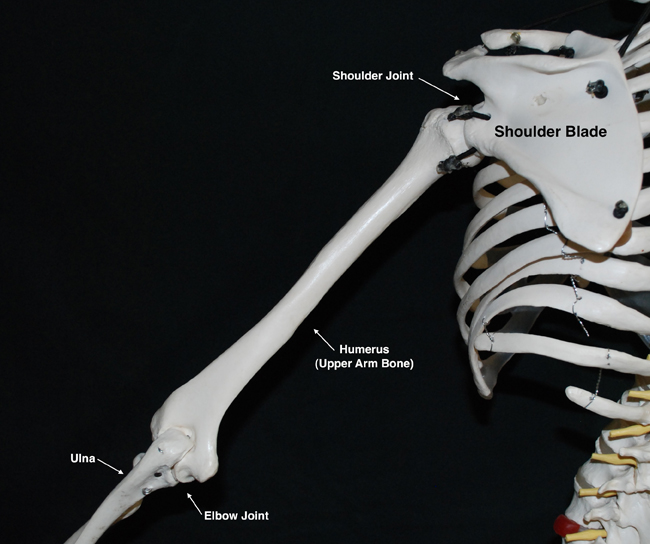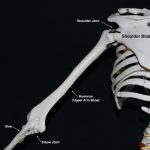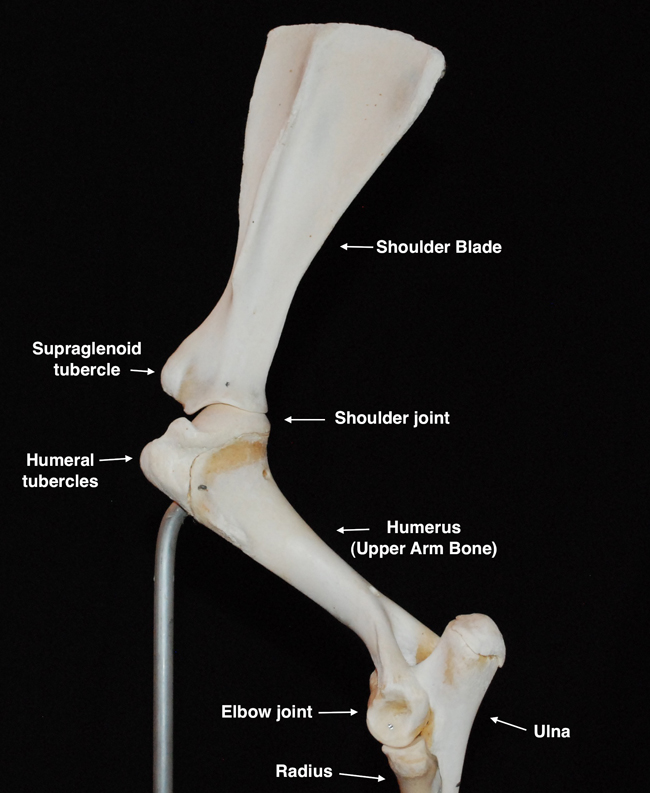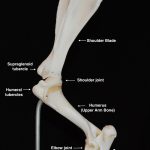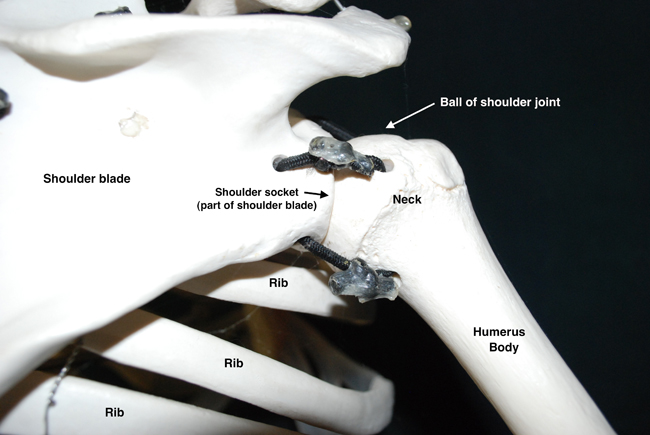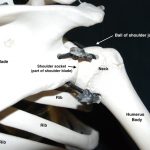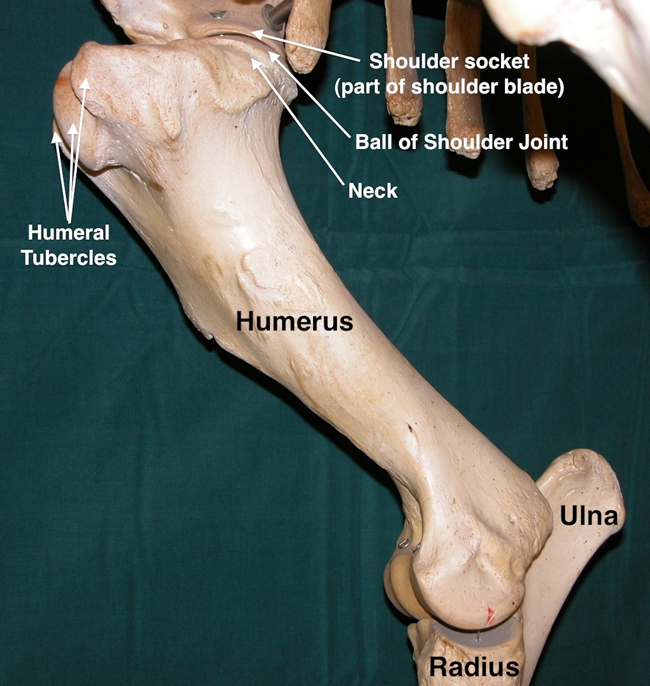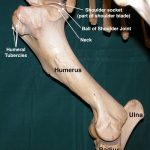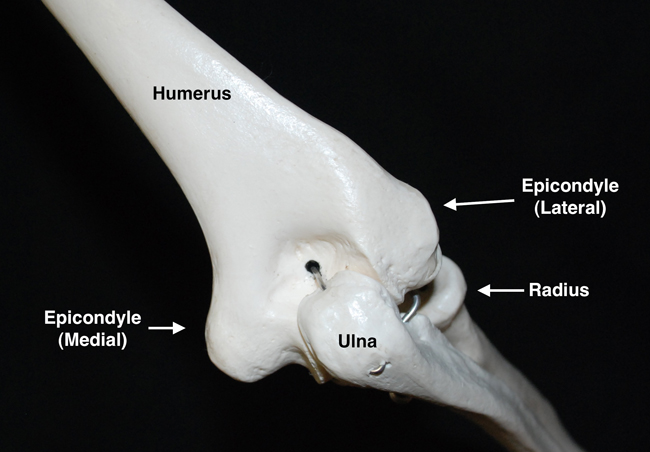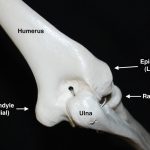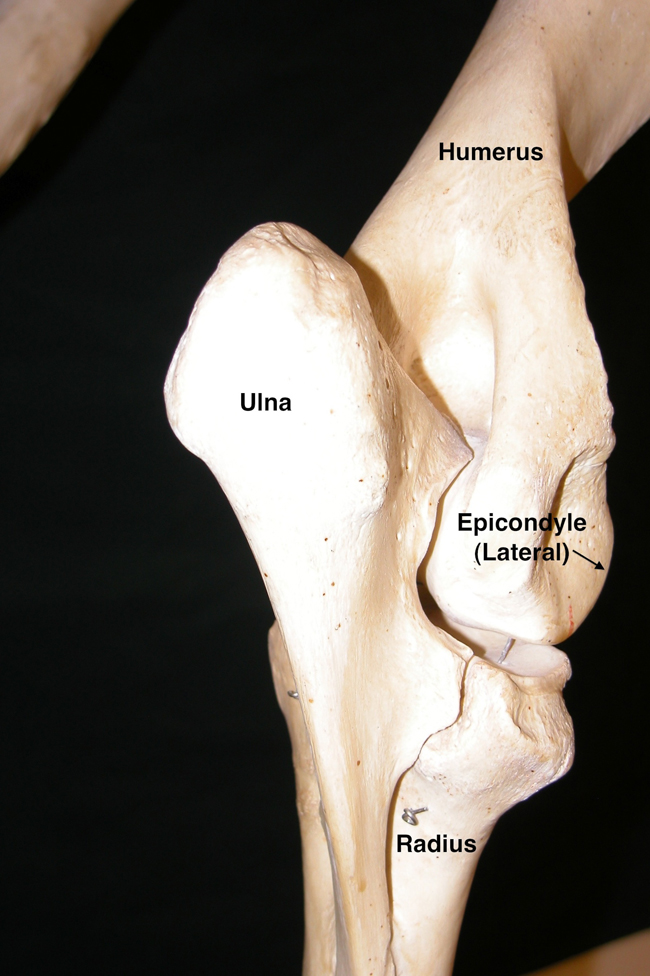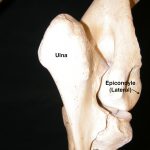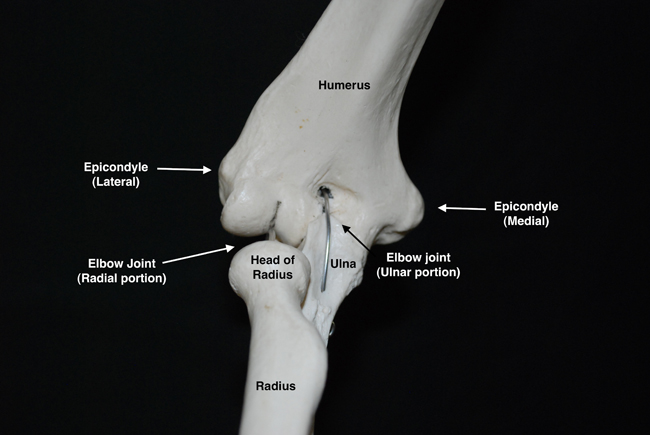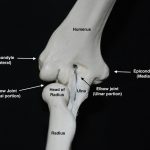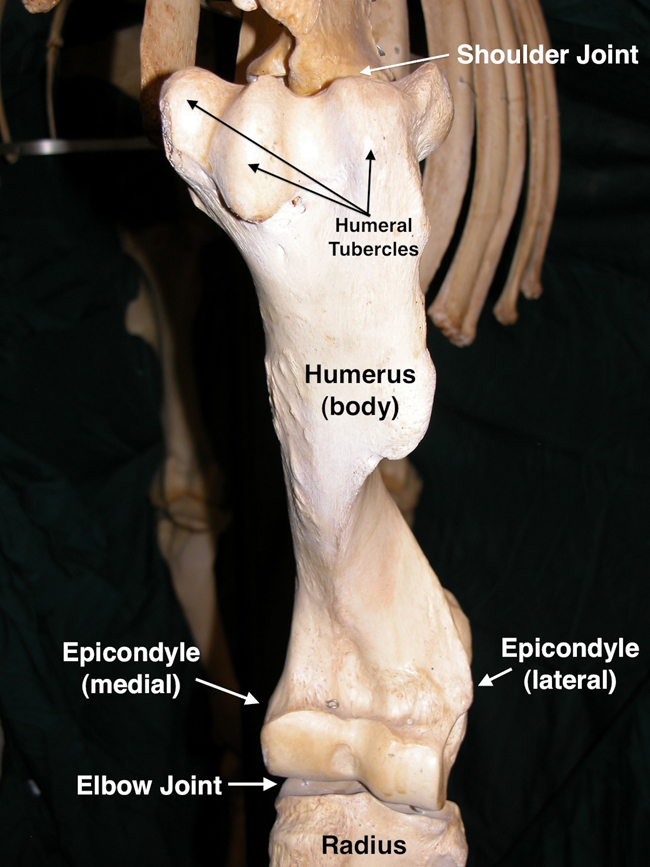Ever wondered why you have trouble controlling your arms when you ride? Do you have wandering elbows? Do you know where the horse’s upper arm is or how it influences his movement? The humerus sometimes known as the upper arm, long bone of the arm or arm bone might not make you laugh but it is a very important part of your skeleton.
The humerus is a single bone in both horses in humans. It is between the shoulder blade and forearm. (Photo 1,b.) At the top is the ball, which forms part of the shoulder joint. The ball is more like a ball of ice cream in a cone in that it is not as distinctly a ball like the hip joint. The ball of the horse’s shoulder joint is also less distinct. (Photo 2a,b, c.) (See all photos in slide show at bottom of page.)
In both horses and humans the humerus has a very short neck followed by the body of the bone, which spirals down to the bottom where the two forearm bone join at the elbow joint. In horses the humerus is very short, thick and has a distinctly spiral shape. This spiral is not as apparent in humans because it is more gradual. The spiral lends strength to the bone.
Even though we both have a ball and socket joint arrangement at the shoulder, the horse is much more limited in the directions he can move his humerus. Imagine if the horse could take his upper arm out the side the way you can?! I am not sure that the horse would be able to stand up under our weight if his front legs moved as easily.
Instead the horse’s ball and socket shoulder joint is much more limited and the humerus remains close to his body for stability and strength. The shoulder joint can flex and extend allowing the humerus to move forward and back. This is important in moving the front leg forward and back and stabilizing the leg while advancing the body. The shoulder joint does allow a small amount of rotational movement, which is largely responsible for any sideways movement of the front leg such as in lateral work. A little sideways movement at the shoulder joint ends up being a large movement at the bottom because of the length of the horse’s legs just like a pendulum. The longer the distance from the top to the bottom the further the bottom will travel on each swing. The long-legged horse potentially has more crossover than the short-legged horse.
The bottom of the humerus has two epicondyles (epi= “upon” and condyle “knuckle”). (Photo 3a,b.) You can feel these two epicondyles on yourself by placing your left hand on your upper arm and then sliding your hand down toward your elbow. As you approach the elbow you will feel to bumps or knuckles of bone protruding out to either side. Your fingers will “catch” onto these knuckles. Bend your elbow while holding the epicondyles. This area doesn’t move when you bend and straighten the elbow because you are on the humerus just above the joint. The bottom of the bone has grooves where radius and ulna meet join. (Photo 4a,b).
In people the humerus is quite long and can be used to determine the person’s overall height. Depending on whether you are male or female there are different formulas. Measure the length of the bone from the shoulder socket to the elbow in inches. For girls multiply this number by 2.8 and add 71.4 for overall body height. For boys the height equals the length of the humerus multiplied by 2.9 plus 70.6.
Female height (inches) = (length of humerus x2.8) + 71.4
Male height (inches) = (length of humerus x 2.9) + 70.6
Next time you go out to the barn feel your horse’s humerus by locating the point of the shoulder (humeral tubercles), which is below the supraglenoid tubercle of the shoulder blade. A tubercle is a small rounded projection. Supraglenoid comes from Latin. Supra means above while glenoid means socket or cavity. Therefore the supraglenoid tubercle is a projection that is above a cavity. The humeral tubercles are projections on the humerus. Trace from the point of the shoulder to the elbow joint. Pick up the leg and repeat this movement. Imagine the shape and size of the humerus as you do this. Notice how short and thick this bone is compared to your humerus.
With the horse’s leg bent see if you can identify the shoulder joint. Start at the point of the shoulder and move your palm toward the horse’s tail a little bit while you raise and lower the forearm. Can you feel the joint move? Put tape on the spine of the shoulder blade and on the humerus. Lift the leg and watch how the shoulder joint opens and closes. Did you put the tape in the right place? The two pieces should meet at the shoulder joint.
Move the forearm from side to side with your hand on the area of the shoulder joint. Feel how this moves – it is not very much compared to you! The ease in which you can move your shoulder joint is largely responsible for those wandering elbows. To keep them under control imagine that you are more like a horse and your humerus has to stay close to your body. And always remember to enjoy the ride!
Wendy Murdoch resides in Washington, VA and is an international riding instructor/clinician. Wendy was a Pony Club Instructor for 6 years and continues to teach for Pony Clubs around the US. She travels worldwide teaching riders of all levels and disciplines how to improve the horse’s performance by improving their body position.
Her book, 50 Five Minute Fixes to Improve Your Riding and Ride like a Natural 3 DVD set are available at www:murdochmethod.com.


